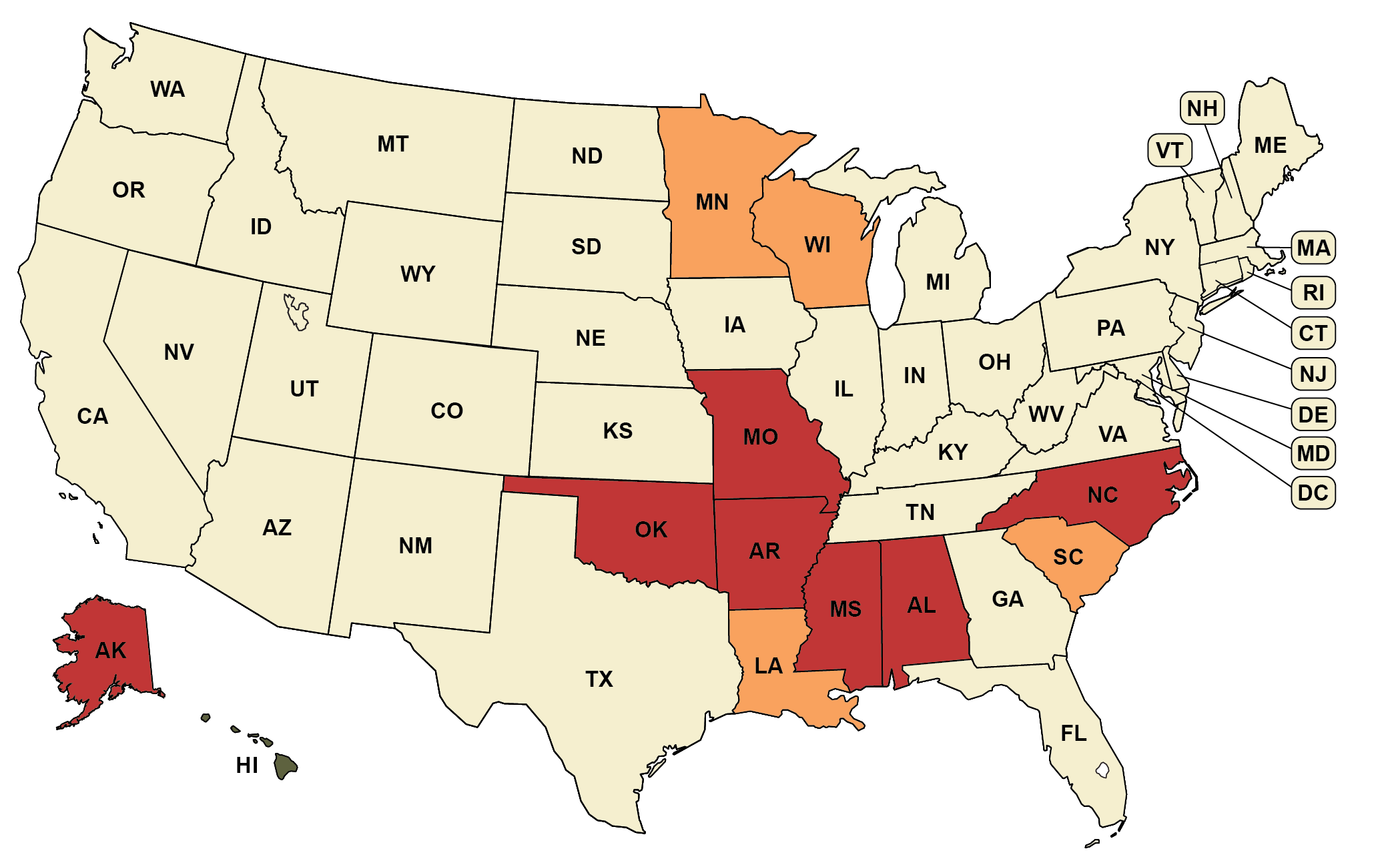In most states, when a voter casts their absentee ballot, they can simply return the ballot through the mail or in person at a drop box or election office. However, some steps impose additional required steps that can create barriers to voters casting their ballot. These additional steps usually consist of requiring a notary or witness signature or requiring a photocopy of acceptable identification.
-
State does not require photocopy of ID, notary or witness signature(s) to return mail ballot
(39 states + D.C.)
-
State requires witness signature(s) to return mail ballot
(4 states)
-
State requires photocopy of ID or notary signature to return mail ballot
(7 states)
Recommended citation: Movement Advancement Project. "Additional Requirements to Return Absentee Ballots." https://www.mapresearch.org/democracy-maps/additional_steps_to_return_mail_ballots. Accessed [day of access]
Breakdown by Population
*Note: These percentages reflect the voting-eligible population, as reported by the United States Election Project.
10 % of voting-eligible population lives in states that requires photocopy of ID or notary signature to return mail ballot
7 % of voting-eligible population lives in states that requires witness signature(s) to return mail ballot
83 % of voting-eligible population lives in states that does not require photocopy of ID, notary or witness signature(s) to return mail ballot


